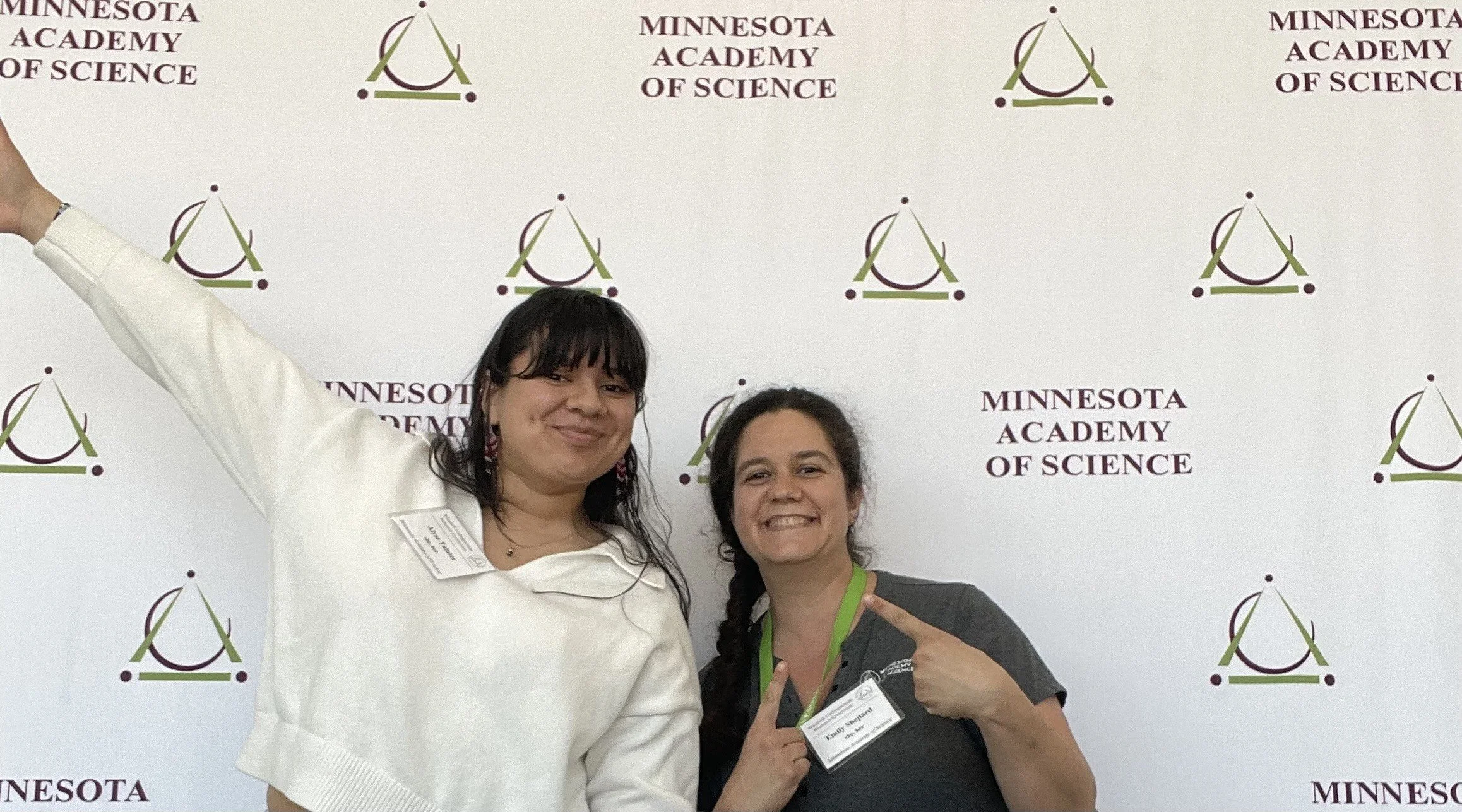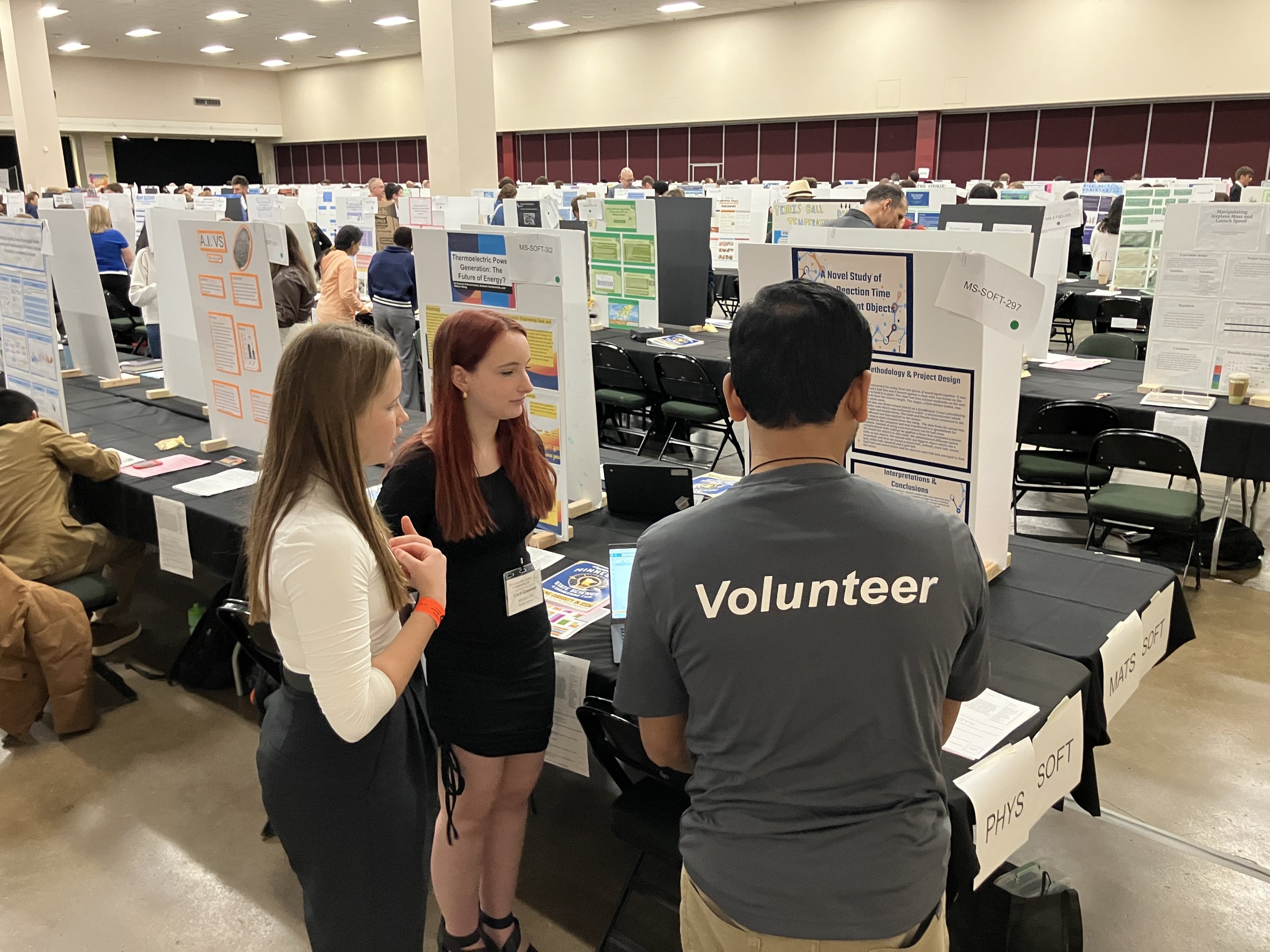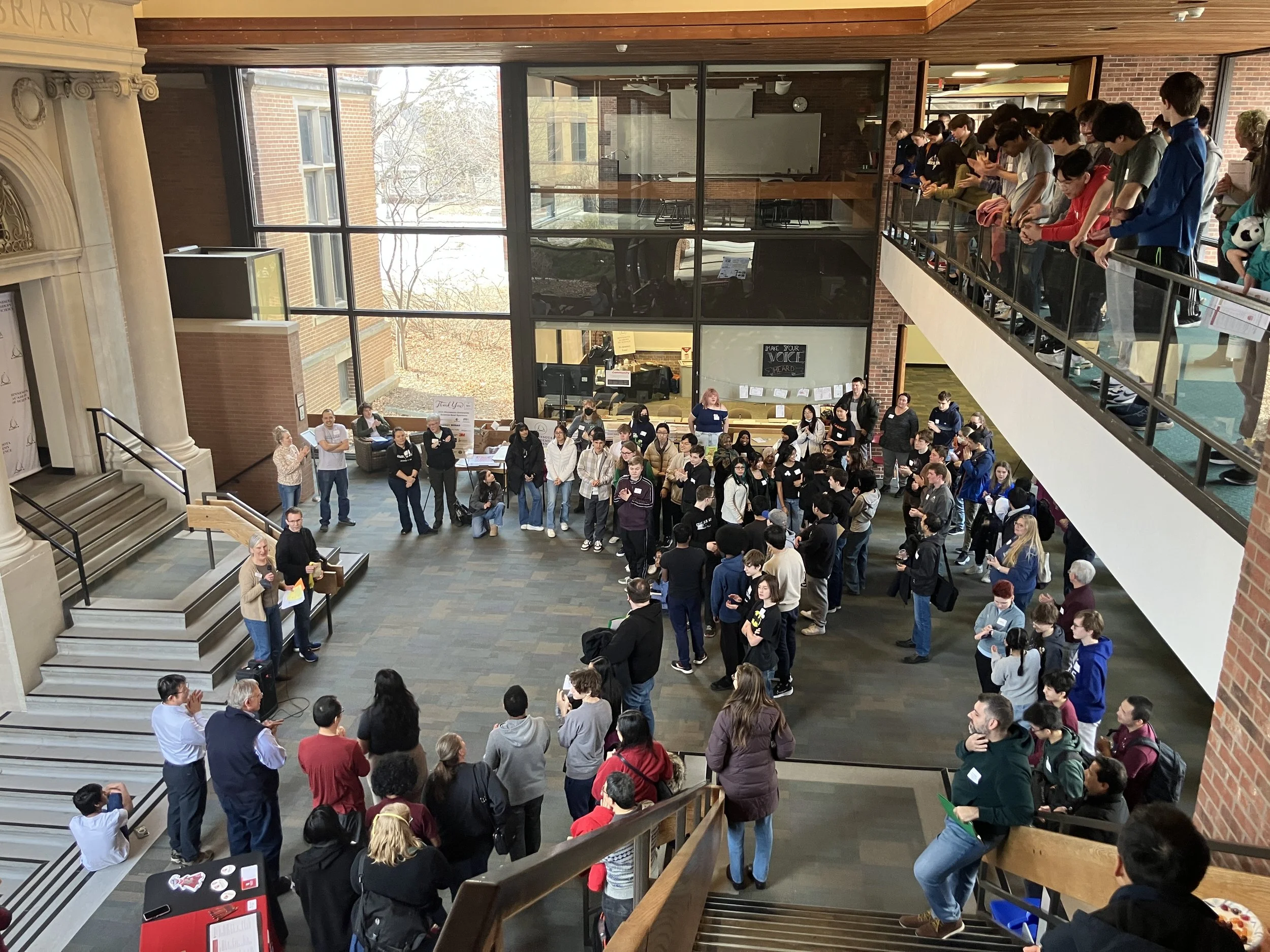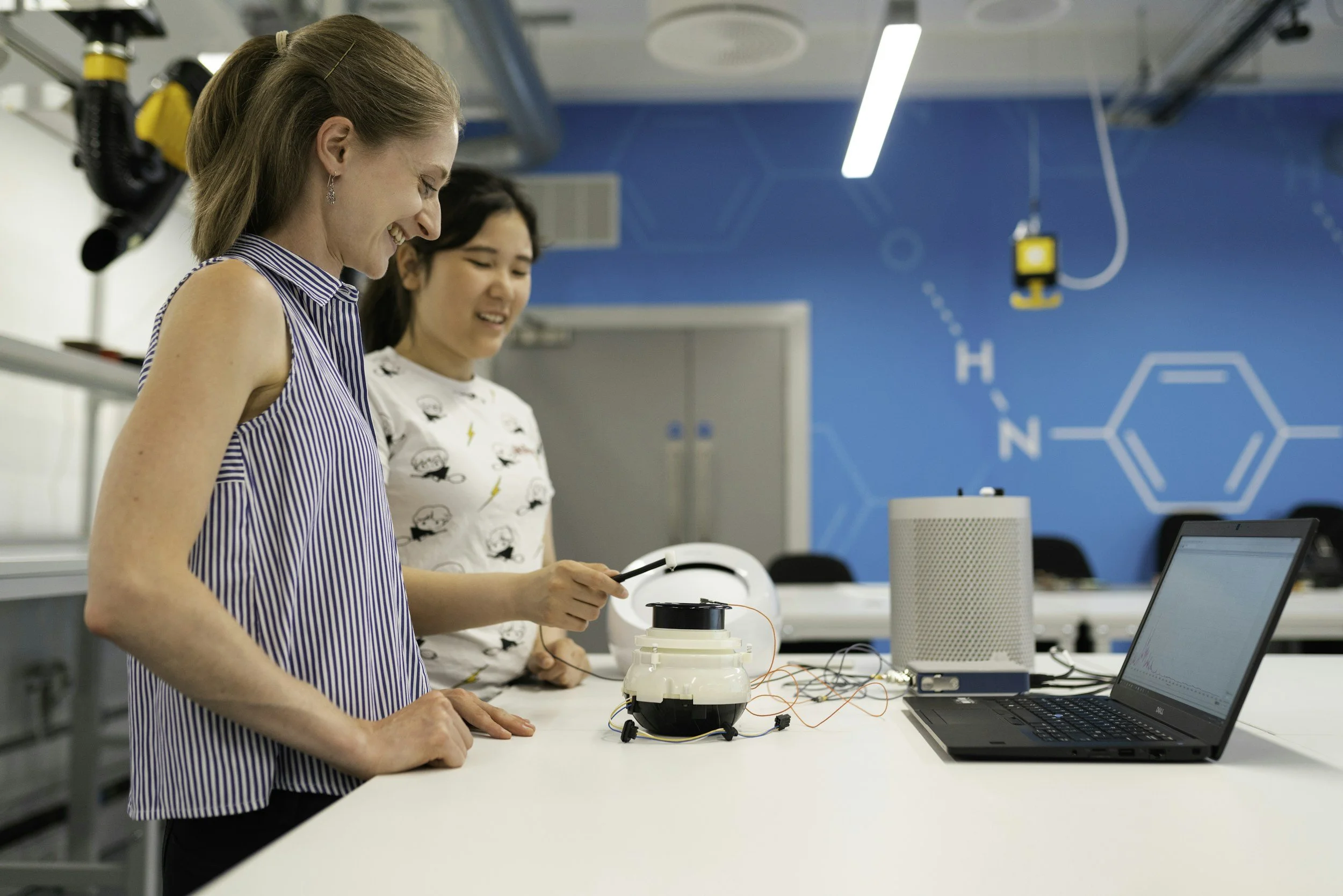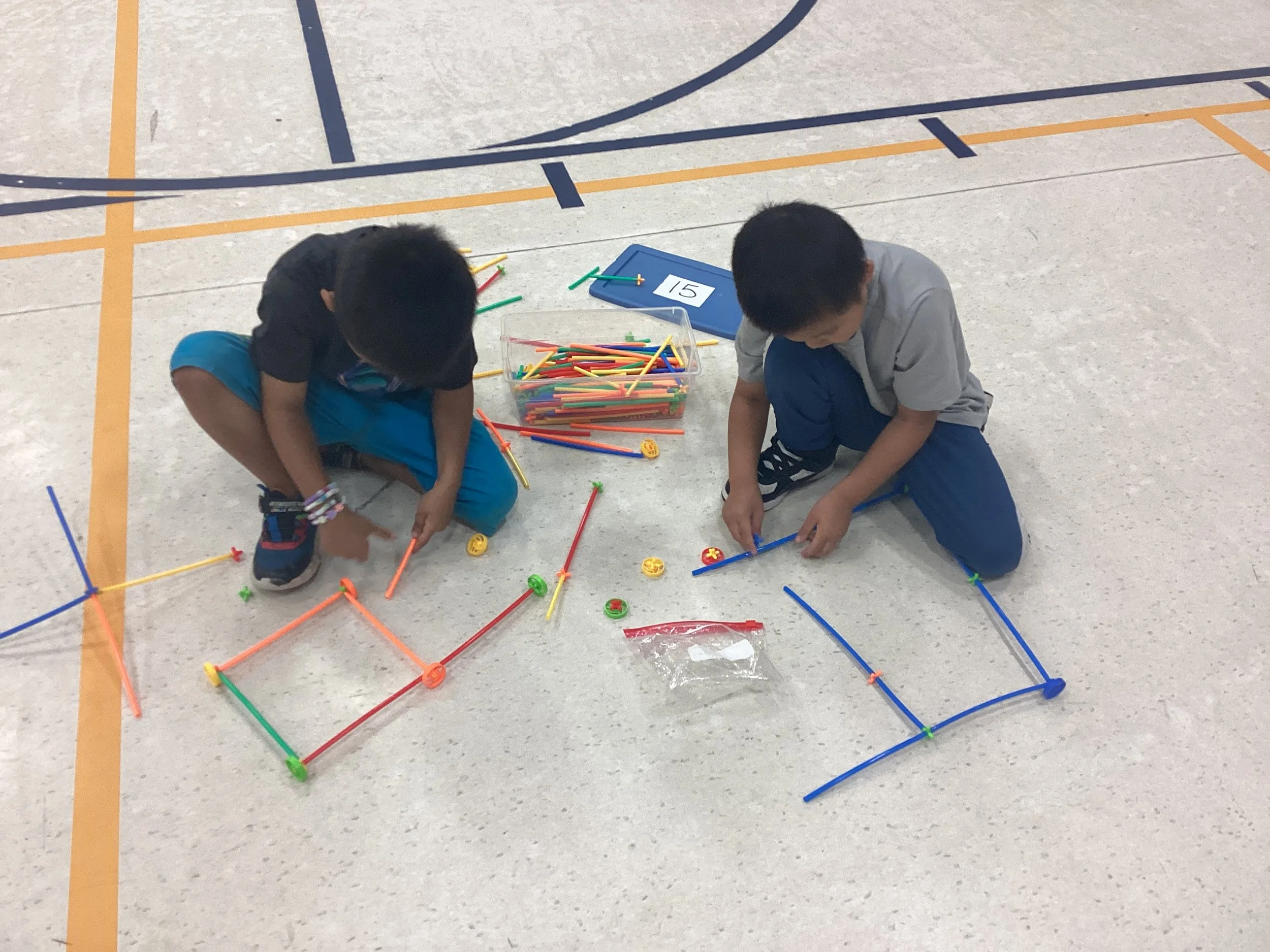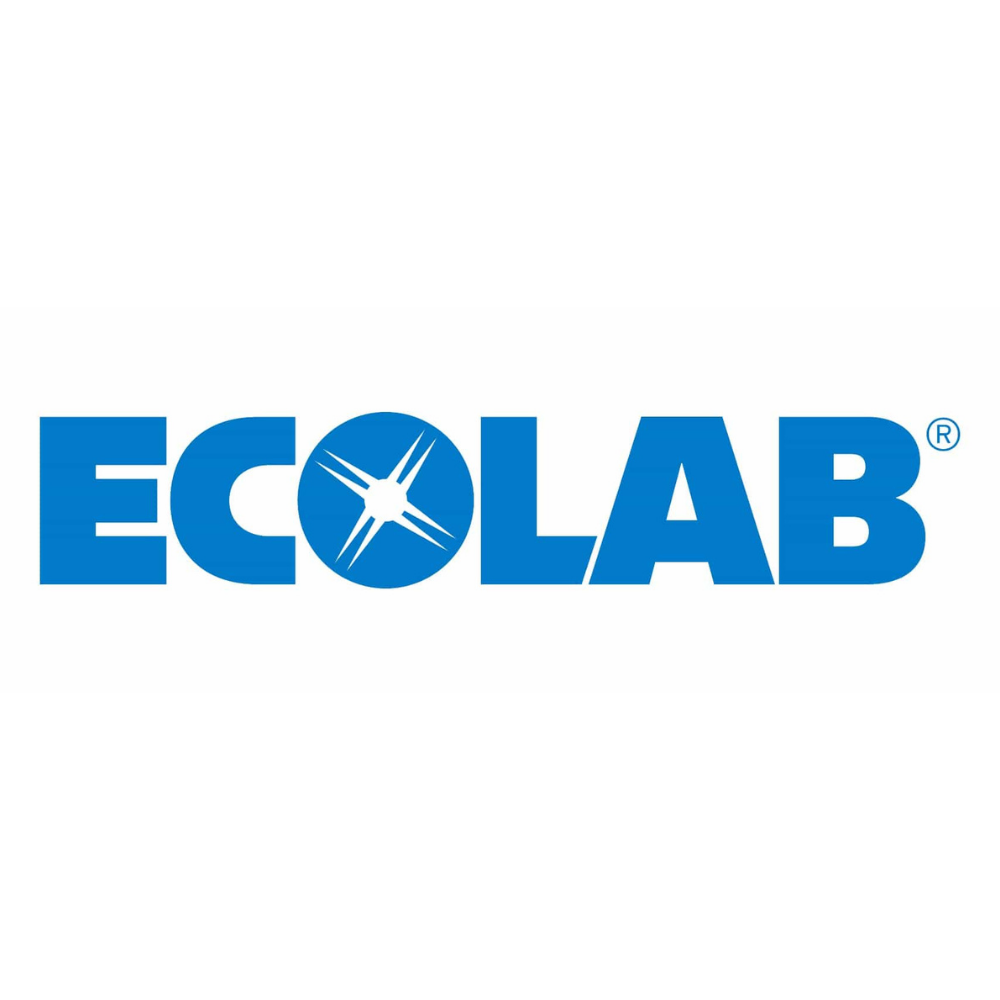History of the Minnesota Academy of Science
Interactive Timeline of the Minnesota Academy of Science’s 150 Year History
Minnesota Academy of Science Archival Material in the Minnesota Digital Library
A wide selection of materials from our archives is now available to the public through the Minnesota Digital Library. This exciting project celebrates our 150th anniversary and was led by Kristine Fowler, our versatile Science Bowl Manager/Winchell Coordinator. This digitization project helps tell the story of how MAS has promoted science in Minnesota over time, celebrating the accomplishments of science and scientists in Minnesota while providing an opportunity to interrogate the systemic limitations of that work. Digitized material includes annual meeting programs, constitutions, and more.
History of the Minnesota Academy of Science
Founding of the Minnesota Academy of Natural Sciences
Dr. Asa Emery Johnson, first president of the Academy. image: MNHS.
The Minnesota Academy of Natural Sciences was formally organized on January 6, 1873 by eleven prominent Minnesotans interested in promoting and learning about science. Under the leadership of eminent Minnesotans such as Geologist Newton H. Winchell and Dr. Asa E. Johnson, the Academy flourished and developed relationships with similar organizations across the world.
Lectures devoted to scientific developments were the main focus of the Academy’s early activities. The Academy published accounts of these presentations as well as other accounts of current scientific research in the Journal of the Minnesota Academy of Natural Sciences.
Growth and Dissolution of the Academy
Throughout the 1890s, the Academy became involved in a scientific expedition to the Philippines as the primary fiscal sponsor. The Academy also coordinated taxidermy for the specimens obtained during this expedition, which was known as the Menage Collection. This collection, which included numerous birds, coral, and a snake skin over 24 feet in length, was exhibited at the Greater America Exposition held in Omaha, Nebraska in 1899. Subsequently, the collection was exhibited to the public for a 10 cent admission fee at the Minneapolis Public Library, where the Academy was headquartered.
In 1903, the Academy changed its name to the Minnesota Academy of Sciences, reflecting its members interests in a broadening array of scientific disciplines.
Original seal of the Minnesota Academy of Natural Sciences.
By 1910, the Academy’s undertakings had declined precipitously, and the death of Newton H. Winchell in 1914 brought virtually all of the Academy’s activities to a halt. The Academy was formally dissolved on February 12, 1929. For a detailed and engaging account of the early years of the Academy, see The Minnesota Academy of Natural Sciences by Martha C. Bray (article available on JSTOR).
An Effort to Renew the Academy
Almost four years passed before the Academy was reorganized. In the spring of 1932, Dr. Rodney B. Harvey delivered an address on “The Organization of Science” to a group of science teachers from Minneapolis high schools. His suggestion of creating a statewide Academy was accepted enthusiastically and Dr. Harvey was asked to present again at the fall meeting of the Minnesota Educational Association. At a special luncheon held on October 28, 1932, Dr. Harvey presented his vision for a statewide Minnesota Academy of Science. As put in the the Journal of the Minnesota Academy of Science recap of Dr. Harvey’s presentation, “the seed fell on good soil.” Prior to adjourning, a representative committee of 55 members and officers was chosen to draft a constitution and by-laws to launch the new organization.
Dr. Rodney B. Harvey. Image: Smithsonian Institution Archives
The general committee met on November 18, 1932 – within a few days of the 60th anniversary of the first organizational meeting called by Professor Winchell. Many enthusiastic scientists attended the meeting, including most of the out-of-town members, which was encouraging for the success of the new organization. After full discussion, the committee adopted the constitution and by-laws and elected the first Council.
A Successful Reorganization
1933 was a banner year for the fledgling organization. The first Annual Meeting of the Minnesota Academy of Science was held on April 13, 1933 at the Zoology Building at the University of Minnesota with good attendance. At a summer meeting on July 15, 1933, 45 active members and 5 associate members were inducted into the Academy. In the fall of 1933, the Minnesota Academy of Science officially became an affiliate of the American Association for the Advancement of Science.
Page from the 1934 Journal of the Minnesota Academy of Science outlining the Academy’s constitution.
At the invitation of the Mayo Clinic and the Rochester Chamber of Commerce, the Academy held its second Annual Meeting in Rochester in the spring of 1934. Attendance was a total of 127 members. According to the Academy’s president, W. A. Riley, the organization’s primary aim is “to stimulate a wider interest in science throughout the state.”
Continuing his emphasis on the importance of reaching a broad audience, Riley wrote in his preface to the Journal of the Minnesota Academy of Science published in 1934, “one of the most useful functions of the Academy lies in developing among our people that type of interest which is based upon a real appreciation of nature rather than on formalized "nature study." The Academy’s second president, Thomas B. Magath, echoed this sentiment, writing “it is clear that there is a desire and necessity for a general society in which scientists and those laymen interested in science can meet and discuss broad principles and their application to various scientific fields.”
Solidifying of the Academy’s Meeting and Journal
The Academy’s regular meetings were an important venue for both the presentation of a wide variety of scientific research and networking among regional scientists and science enthusiasts. The Academy’s president in 1936, E.M. Freeman articulated the importance of the Academy’s role “not only of uniting the scientific thought of the whole commonwealth but also of concentrating the knowledge and power of science toward improvement in the social, economic, and educational progress of the state. Our scientists are, by reason of their varied occupations, widely scattered and often isolated. Friendships and personal contacts are powerful promoters of cooperation. Interchange of thought is a stimulus to scientific growth. Organization for a common cause in our common interests is obviously essential.”
Official seal of the Minnesota Academy of Science, adopted in 1937.
Records of the Academy’s meetings were dutifully published in the Journal of the Minnesota Academy of Science, forming a valuable resource regarding the history of scientific research within the state throughout the twentieth century.
By 1936, the Academy boasted nearly 500 members. In addition to meetings, the Academy awarded research grants to scientists statewide and had several sections of special interest groups. The Academy also began supporting the xMinnesota Junior Academy of Science, an organization for high school students who were aspiring scientists. Through this program, the Academy took a leadership role in emphasizing science and mathematics in high school curricula prior to national initiatives that followed Sputnik.
The process of formal incorporation through the State of Minnesota was completed during 1937, and an official seal was adopted.
Establishment of the Itasca Wilderness Sanctuary and the Cedar Creek Natural History Area
In 1939, the Itasca Wilderness Sanctuary was established by agreement between MAS, Minnesota Department of Conservation, and Minnesota State Parks. At the time, MAS held annual fall meetings at Itasca State Park, using the area that became the Itasca Wilderness Sanctuary as an outdoor classroom. The land contained hundreds of acres of old growth (over 100 years old) red and white pine, jackpine, and the only white cedar stand within Itasca State Park. The establishment of the Itasca Wilderness Sanctuary marked the first designated wilderness area in any Minnesota State Park. In 1983, 1,601 acres of the Itasca Wilderness Sanctuary was designated a state Scientific and Natural Area (SNA), lauded for being the “finest example of Great Lakes Pine Forest in north-central Minnesota.”
In 1940, the Minnesota Academy of Science was instrumental in establishing the Cedar Creek Natural History Area (now known as the Cedar Creek Ecosystem Science Reserve) through the initial purchase of a tract of 500 acres of land. The Academy transferred the title of the land to the University of Minnesota as a gift. When further funds became available to the Minnesota Academy of Science and the University of Minnesota from the Fleischmann Foundation, further land was acquired and a laboratory was constructed on site.
Research plots at the Cedar Creek Ecosystem Science Reserve in 2014. Image: Cedar Creek.
Through agreements with the Minnesota Academy of Science, the University of Minnesota maintains Cedar Creek under the administration of the Graduate School Dean, who appoints a Director and an Associate Director. The University agreed to keep and preserve Cedar Creek lands in their natural condition and administer the area to encourage its wise use for scientific and educational purposes.
Today, Cedar Creek is the center of numerous important long-term ecological research projects. As noted on their website, these projects “combine long-term experimentation and observation to examine the controls of successional dynamics and spatial patterning in ecosystems at the prairie-forest boundary… Results of Cedar Creek research are contributions to our fundamental knowledge of the workings of nature and are being utilized by many organizations, including the Minnesota Department of Natural Resources, the Environmental Protection Agency, and The Nature Conservancy. In addition, Cedar Creek Ecosystem Science Reserve serves as a research and teaching facility for six colleges from the University of Minnesota and for other colleges and universities both within and outside Minnesota.”
Additionally, Cedar Creek provides a variety of programs for the general public, including the Fish Lake Nature Trail and numerous virtual and in-person events. Cedar Creek also offers numerous field trips, outreach events, and digital resources for K-12 students. The Minnesota Academy of Science takes great pride in our role of the establishment of the Cedar Creek.
Expansion of the Academy’s Programming
Informational MAS flyer from 1965
Through the 1950s and 1960s, the Academy greatly expanded the reach and breadth of its programming. The Academy also created a paid secretary position to provide continuity within the organization and expand program offerings. With a generous grant from Louis W. and Maud Hill Family Foundation, the Academy established the office of Executive Secretary and opened an office in the Science Museum of the St. Paul Institute in 1956.
In cooperation with other scientific organizations throughout Minnesota, the Academy began sponsoring eight Regional Science Fairs and the Junior Academy State Science Fair in 1950. Until 1967, the State Science Fair was held jointly with the Annual Meeting of the Minnesota Academy of Science. From its establishment to the current day, the Minnesota State Science and Engineering Fair has provided a vital annual forum for hundreds of middle and high school students from across Minnesota to present original research to STEM professionals and compete for prestigious awards.
Beginning in 1967, the Winchell Undergraduate Research Symposium has been held at the Annual Meeting of the Minnesota Academy of Science. This symposium prepares undergraduates to enter STEM fields by providing a forum for students to showcase their scientific research, receive comments from professional scientists and peers, and network with professionals in the fields they aspire to enter.
The first Tri-State Junior Science & Humanities Symposium (now known as the North Central Regional Junior Science & Humanities Symposium) was hosted in 1968 by the Minnesota Academy of Science in conjunction with the US Army. In 2022, MAS decided to no longer host this event.
New Directions as a Nonprofit
“The purpose of the Minnesota Academy of Science is: to promote the understanding and awareness of the role of science in society, to support in the public domain those individuals
engaged in the conduct, education, and learning of science, to provide opportunities for expression of scientific endeavors and accomplishments, to recognize the contributions of individuals, institutions, and industry in the field of science.”
Under the leadership of Dr. Gary Goken, the Minnesota Academy of Science Board of Directors shifted to an advisory role and placed more governing power in the hands of the Executive Director. These changes were fine-tuned in 1996 and serve as the current basis for how the Minnesota Academy of Science operates.
The Academy established the Minnesota Science Bowl in 1994 as part of the Department of Energy National Science Bowl. These fast-paced team Q & A competitions for middle school and high school students cover all branches of science and math and encourage teamwork and communication.
In the 2010s, MAS The Academy also created the High School STEM Communicator Awards focused on providing recognition for written communication skills among young scientists, technologists, engineers, and mathematicians. This program ran until 2018.
The Science Salon program, which began in 2015 is a professional networking event to help scientists throughout Minnesota stay current and stay connected. Topics have included the Zika Virus, Improving the Health of Bee Populations, Biofilms, Reinventing Cities, 3D printing, Plant Pathology, and tours of the UMN Veterinary Diagnostics Laboratory and the St. Anthony Falls Laboratory.
Bodote Science Fair winners, 2020
In 2017, the Academy formed Fostering Opportunities and Relationships in STEM Education (FORSE), our innovative program to connect students from backgrounds under-represented in STEM with scientists and hands-on STEM experiences. FORSE began as a pilot program at Bdote Learning Center in Minneapolis. MAS recruited and trained mentors who worked with students to develop all aspects of a science fair project, which were showcased in a Bdote Science Fair at the end of the program. MAS also coordinated STEM enrichment units where volunteers introduced Bdote students to concepts centering on the scientific method. FORSE has continued to expand exponentially as we seek to create fun and hands-on opportunities for STEM learning for students from backgrounds historically underrepresented in STEM. In 2022, FORSE served nearly 3,000 Twin Cities students at 22 schools and enrichment programs. The FORSE program currently works with numerous community partners to organize opportunities such as STEM summer camps, STEM author events, coding clubs, mentorships, STEM play Days, and STEM career pathway videos.
MAS Executive Director Lara Maupin greets visitors at STEM Day at the 2022 Minnesota State Fair
The Academy has in the past disseminated pertinent and timely information through its publications, and we strive to make this research available to the public. In 2022, archives of the Journal of the Minnesota Academy of Science were digitized by the University of Minnesota-Morris and are searchable and readable online. The Minnesota Academy of Science Journal of Student Research has published student research and winning papers from the High School STEM Communicator Awards. Members of the Academy can keep in touch with current happenings and the latest news through the monthly news and information emails sent to our constituents.
Our 150 year history is characterized by change and renewal as MAS sought to adapt to the needs of Minnesota's STEM communities. Much has changed in Minnesota, science, and our organization since 11 men first established the Academy in Minneapolis in 1873. As we look forward, we strive to work together to create a future where Minnesotans of all backgrounds have opportunities to engage in the STEM practices that will benefit their community, education, and career.
Presidents of the MAS Board of Directors
Since 1932, the Minnesota Academy of Science has consistently had a President of the Board of Directors serving in a leadership role. The presidents of the Minnesota Academy of Science have shaped its mission, vision, focus, and organizational direction for more than 85 years.
1932 - 33
1933 - 34
1934 - 35
1935 - 36
1936 - 37
1937 - 38
1938 - 39
1939 - 40
1940 - 41
1941 - 42
1942 - 43
1943 - 44
1944 - 45
1945 - 46
1946 - 47
1947 - 48
1948 - 49
1949 - 50
1950 - 51
1951 - 52
1952 - 53
1953 - 54
1954 - 55
1955 - 56
1956 - 57
1957 - 58
1958 - 59
1959 - 60
1960 - 61
1961 - 62
1962 - 63
1963 - 64
1964 - 65
1965 - 66
1966 - 67
1967 - 68
1968 - 69
1969 - 70
1970 - 71
1971 - 72
1972 - 73
1973 - 74
1974 - 75
1975 - 76
1976 - 77
1977 - 78
1978 - 79
1979 - 80
1980 - 81
1981 - 82
1982 - 83
1983 - 84
1984 - 86
1986 - 88
1988 - 90
1990 - 92
1992 - 94
1994 - 96
1996 - 98
1998 - 99
1999 - 00
2000 - 02
2002 - 04
2004 - 06
2006 - 08
2008 - 13
2013 - 15
2016 - 17
2017 - 19
2019 - 21
2021 - present
W. A. Riley
H. E. Stork
E. M. Freeman
Rev. Wendel Luetmer
W. S. Cooper
L. M. Gould
O. T. Walter
E. T. Tufte
R. B. Harvey
G. A. Thiel
Charles Sheard
G. L. Miller
Walter Breckenridge
W. A. Kenyon
W. C. Croxton
Ernst Abbe
R. W. Darland
L. A. Ford
W. H. Marshall
Harold T. Peters
Harold Hansen
John L. Rendall
Walter O. Lundberg
Robert L. Evans
Courtland L. Agre
V. Elving Anderson
Frank M. Noice
Edmund C. Bray
Paul J. Germann
Richard W. Fulmer
Merle P. Meyer
L. D. Frenzel, Jr.
Richard J. Myshak
David L. Douglas
Michael Naylon
Kathleen Keenan
John Haaland
Jack Mauritz
James R. Johnson
Wayne Wolsey
William Bessler
Connie Clark
Wayland Ezell
Gary Goken
Wayne Anderson
Len Soroka
Thomas Brunelle
Raymond Sicard
James Bracke
Gordon MacFarlane
James Fairman
Michael Williams
University of Minnesota
Carleton College
Mayo Clinic
University of Minnesota
St. John’s University
University of Minnesota
Carleton College
Macalester College
University of Minnesota
St. Olaf College
General Mills
University of Minnesota
Mayo Clinic
University of Minnesota
State Teacher College, Mankato
University of Minnesota
Hamline University
Mayo Foundation
University of Minnesota
State Teacher College, St. Cloud
University of Minnesota
University of Minnesota, Duluth
State Teacher College, Mankato
University of Minnesota
Mayo Clinic
Bemidji State University
University of Minnesota
St. Olaf College
3M Company
Hormel Company
University of Minnesota
Augsburg College
University of Minnesota
Moorhead State University
University of Minnesota
St. Thomas University
Cargill Company
University of Minnesota
Honeywell Corporation
Macalester College
ChemServ
Environmental Center
Gould, Inc.
Honeywell Corporation
Environmental Center
University of Minnesota
Pillsbury
Hennepin Park Reserve District
3M Company
Macalester College
Mankato State University
VA Medical Center
St. Cloud State University
Alexander Ramsey High School
3M Company
St. Clair High School
St. Cloud State University
3M Company
LecTec
University of Minnesota
Macalester College
Lifecore Biomedicial Inc.
Hill-Rom
Gustavus Adolphus College
Mankato State University
Science Museum of Minnesota
3M Company
Beckman Coulter
Gustavus Adolphus College
Beckman Coulter
Minnesota Department of Education















